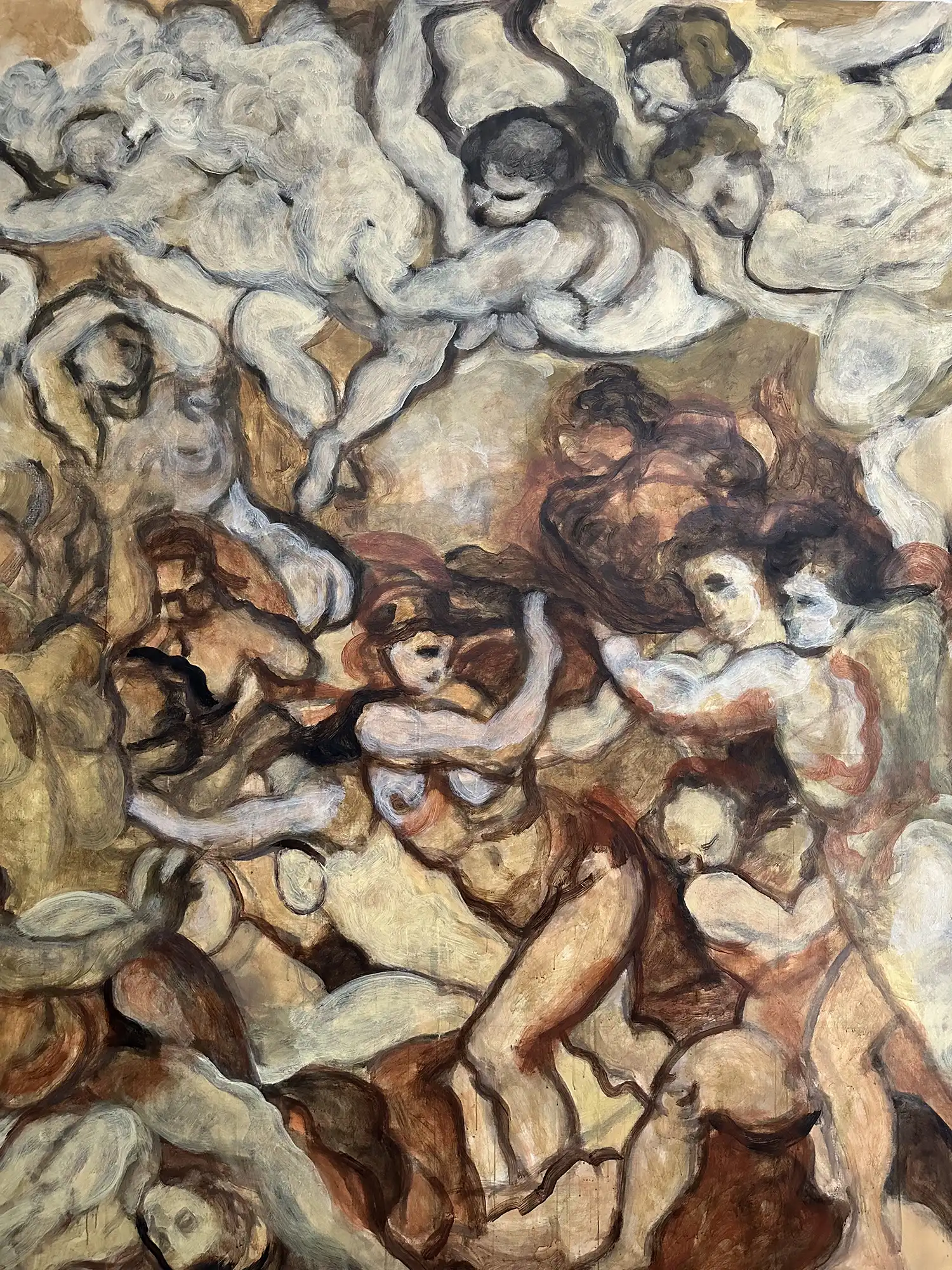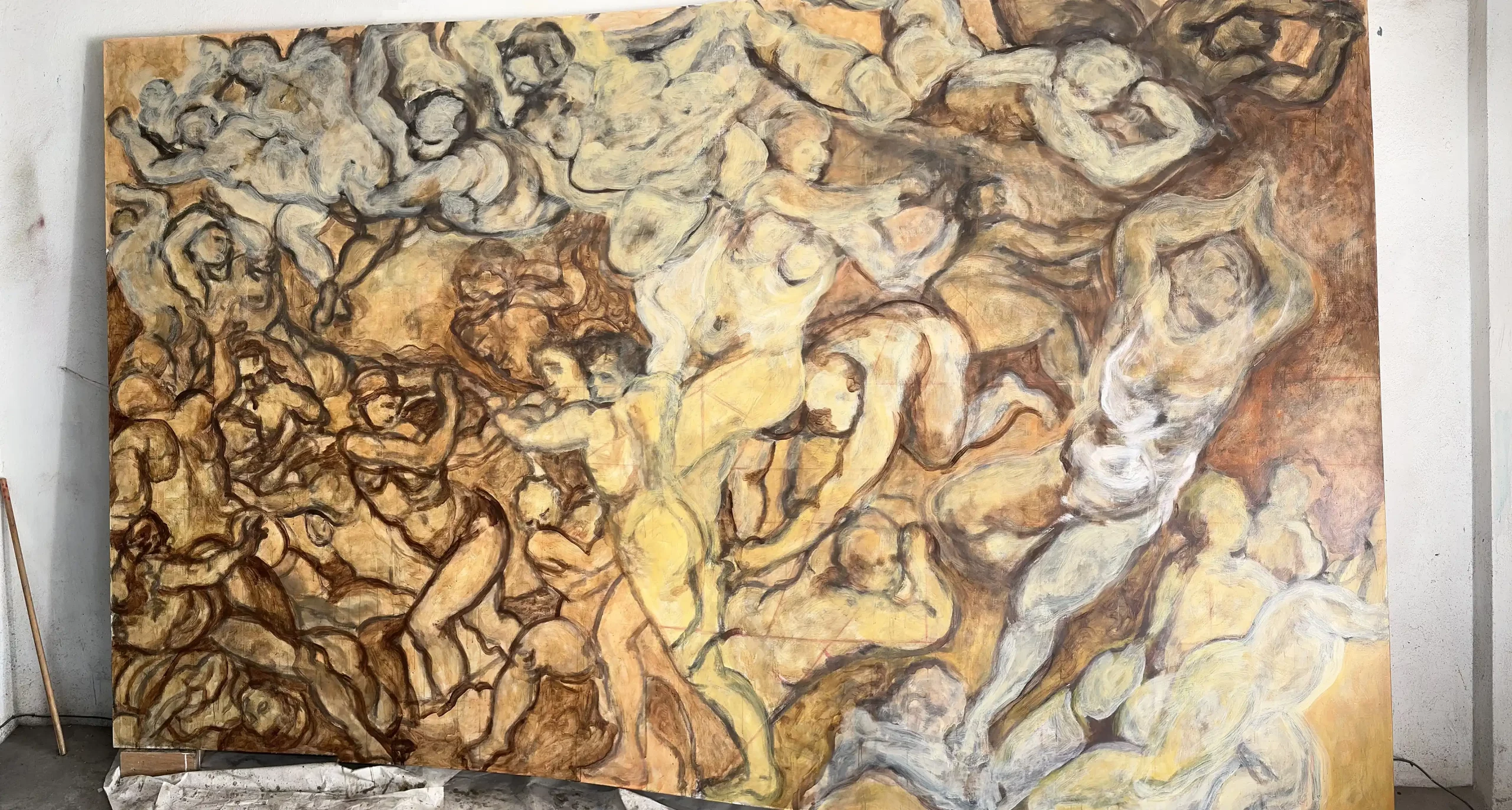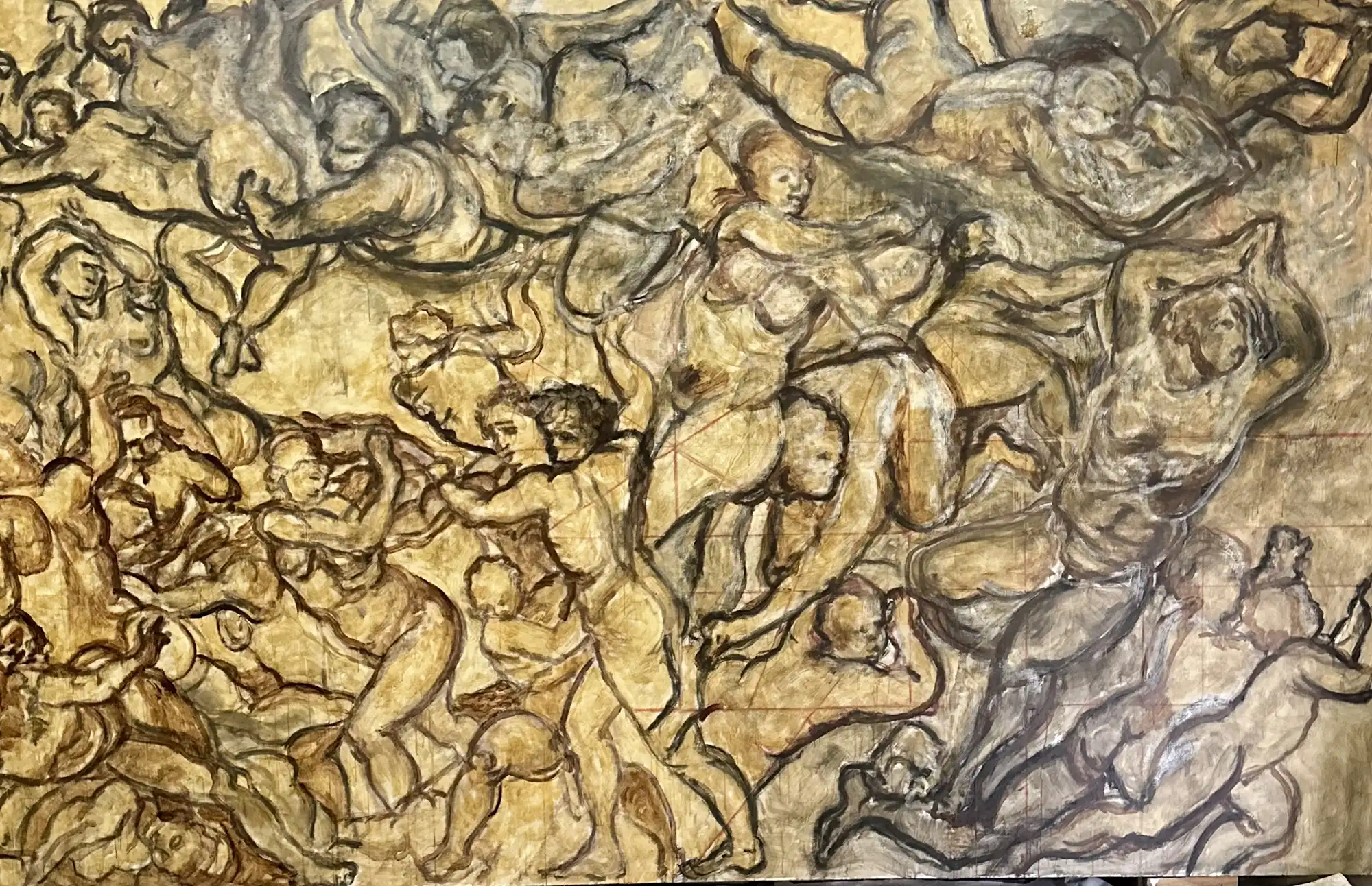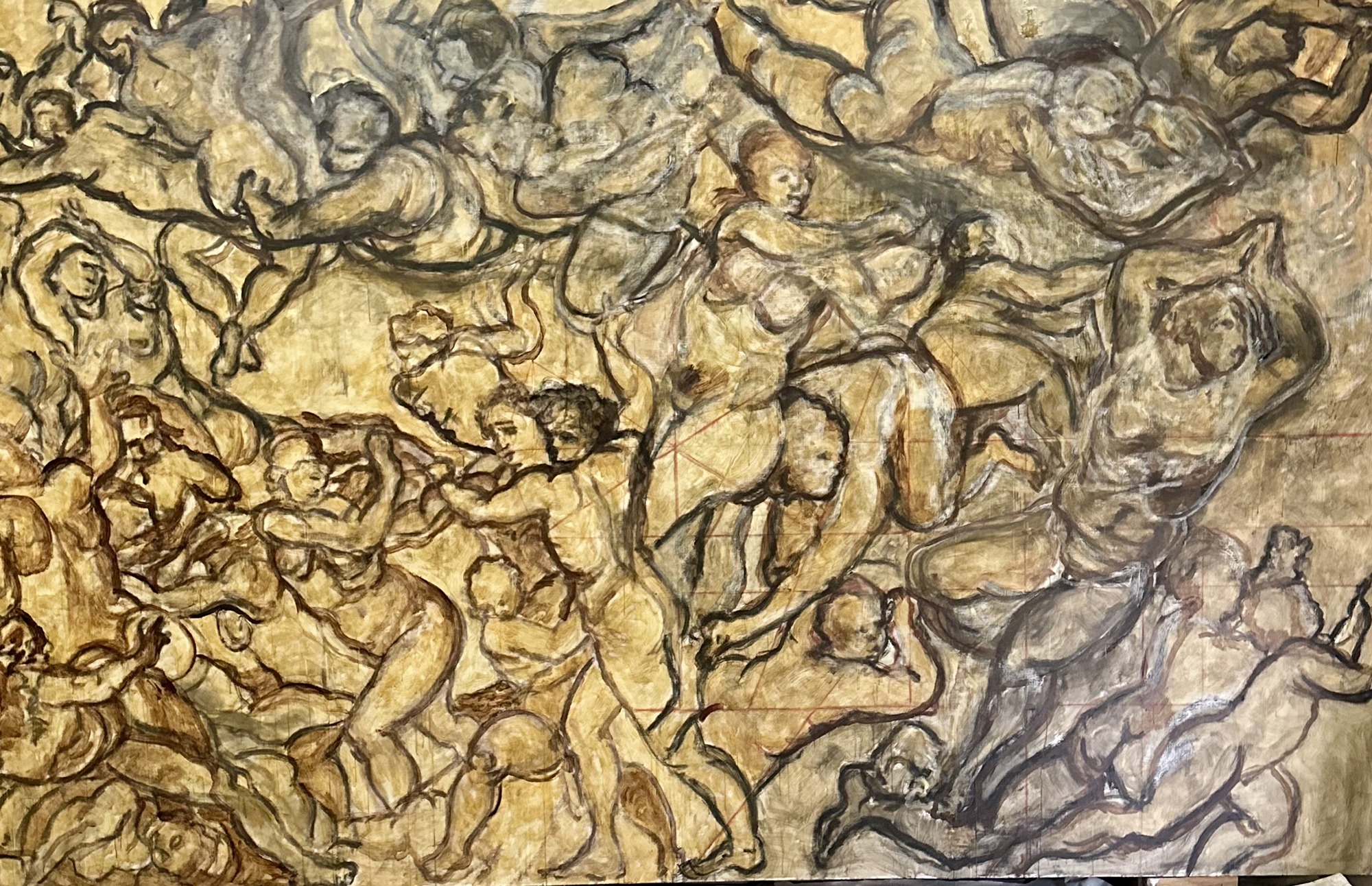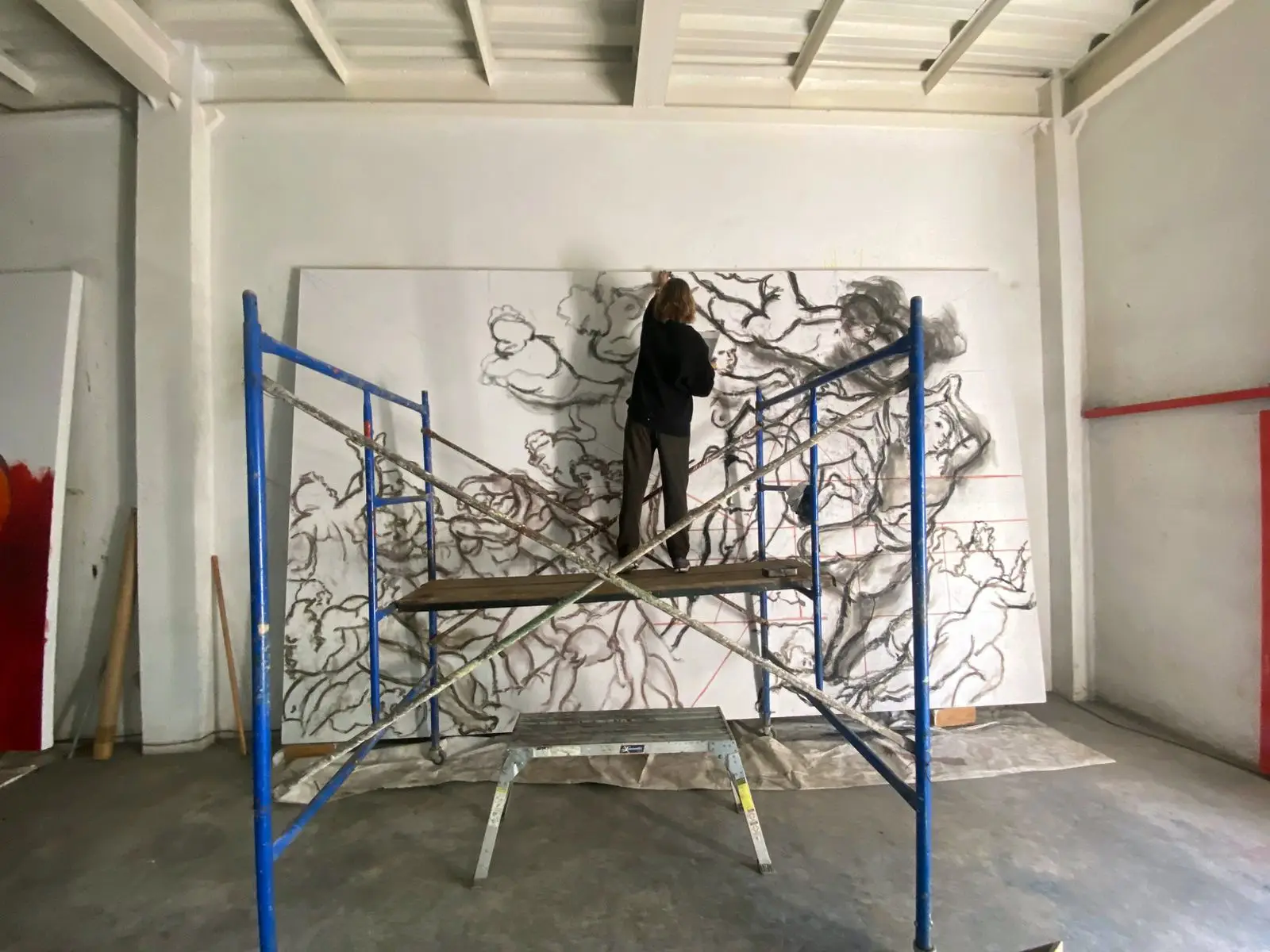In progress
Fundación Sebastián
Texto: Alicia Amador
A través de esta pieza, continuó mi investigación sobre la efervescencia colectiva manifestada en una unión lúdica, vibrante y corporal. Retratando lo que parece un fragmento de una masa de cuerpos convergiéndose en un espiral ascendente, busco expandir el trabajo manierista de Il Bronzino.
De nuevo, hago referencia a dos de los bocetos del artista, uno de 1565 titulado “The Virtues and Blessings of Matrimony Expelling the Vices and Ills” y otro, “Putti” de 1548, para construir una nueva concepción del colectivo, en la cual cada cuerpo no se encuentra en un único punto de tensión en una lucha solitaria, sino que existe la posibilidad de una experiencia compartida de devenir, como lo evidencia la fusión intencional de cuerpos, pinceladas y colores, así como la no existencia de separación total ni indicadores esencialistas de géneros del todo aparentes. La obra intenta evocar una danza post-individualista suspendida en el tiempo, guiando la mirada en un viaje por el lienzo con una invitación visual a evitar las estrictas separaciones de forma que construyen el canon original.
Elegí un medio de técnicas inventivas de superposición para guiar el ojo hacia la visión de cuerpos en movimiento colectivo, aparentemente expandiéndose más allá del lienzo mismo hacia un espacio de potencialidad infinita. Aquí surge una sensación de un ciclo eterno que recorre la historia, desestructurando lentamente la rigidez de la materialidad y la jerarquía en un sublime encuentro de unión.


